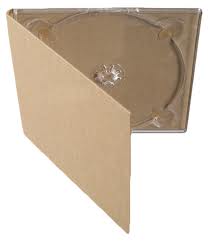All About Digipacks

Traditionally CD’s have been packaged in various forms such as hard plastic jewel cases. The jewel case offered a sleek form factor with the capability to house various inserts and booklets. One of the downfalls to this type of packaging is the tendency to crack. This presented a major problem to both manufacturers and users alike. For manufacturers often times product would be damaged easily during shipping making the CD unsellable. For users, cases would often break during normal use and have the potential result of a scratched CD.
The Digipak was introduced in the year 2000 and is a patented style of packaging and its name and designs are licensed by companies around the world. Digipaks were one of the first alternatives to jewel cases for CD Duplication projects. With sleek looks and plenty of fancy printable area, this alternative became a quick favorite among the Independent artist scene. There is so much to like, from being environmentally friendly to having a great deal of visible printed artwork.
The Digipak was introduced in the year 2000 and is a patented style of packaging and its name and designs are licensed by companies around the world. Digipaks were one of the first alternatives to jewel cases for CD Duplication projects. With sleek looks and plenty of fancy printable area, this alternative became a quick favorite among the Independent artist scene. There is so much to like, from being environmentally friendly to having a great deal of visible printed artwork.
Additional Details

Digipaks are less likely to encounter the damage the render jewel cases useless. They are made of a paperboard material and typically have a plastic insert that is adhered to one of the surfaces. Unfortunately this design is more susceptible to abrasion than jewel cases so corner wear and ripping are likely over time. A UV coating can help ensure a longer life and prevent some of the previously mentioned issues. Digipaks come in a number of different forms, including a book style and 3 panel design in which the CD rests in the center and the left and right sides fold on top of it. A generic form typically called a digipack is widely available and is used to describe virtually all soft packaging. Whether it is generic or the original digipak, they all look and feel the same.
Digipaks traditionally have only been available in high qualities but advances in equipment have allowed them to be produced on the fly. This has allowed many independent artists to get their CD out to the world in stunning fashion. Of course with the fantastic aesthetics comes a significant cost as well. For low quantity projects, Digipaks can cost 50-100% more than a traditional jewel case and even significantly more when compared to other alternative packaging such as a slim jewel case or paper sleeve. This form of packaging is surely not for the budget conscious as the cost in small quantities can be very prohibitive. It is fairly surprising that Digipaks have not grown even further in overall popularity. Even today a very small portion of CD packaging sold is in the form of a Digipak. The likely cause is the cost to produce the digpak at low quantities is still relatively high.
Digpaks are a fantastic alternative to a standard jewel case. They are more environmentally friendly, less likely to crack, and provide an excellent looking marketing piece. Even though Digipaks are currently available for short run applications, the cost is very high when compared to other more traditional packaging methods.
Digipaks traditionally have only been available in high qualities but advances in equipment have allowed them to be produced on the fly. This has allowed many independent artists to get their CD out to the world in stunning fashion. Of course with the fantastic aesthetics comes a significant cost as well. For low quantity projects, Digipaks can cost 50-100% more than a traditional jewel case and even significantly more when compared to other alternative packaging such as a slim jewel case or paper sleeve. This form of packaging is surely not for the budget conscious as the cost in small quantities can be very prohibitive. It is fairly surprising that Digipaks have not grown even further in overall popularity. Even today a very small portion of CD packaging sold is in the form of a Digipak. The likely cause is the cost to produce the digpak at low quantities is still relatively high.
Digpaks are a fantastic alternative to a standard jewel case. They are more environmentally friendly, less likely to crack, and provide an excellent looking marketing piece. Even though Digipaks are currently available for short run applications, the cost is very high when compared to other more traditional packaging methods.
